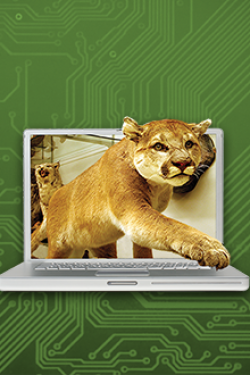
Lethbridge College has launched the first digital version of its Hubbard Wildlife Collection to make the unique learning resource accessible to its students and the world.
In its debut, the Hubbard Virtualization project puts 60 species online with information on habitat, migration, diet, reproduction and conservation status. Site visitors can then call up a 3-D image of the species and rotate the image 360 degrees. The project has the potential to offer a 3-D skull image, video and audio information, tracks and range, and learning activities, making it one of the most comprehensive digital wildlife information sites in Canada.
Funded in part with a $90,000 grant from Inukshuk Wireless, a subsidiary of Bell Canada and Rogers Communications, the $168,000 project was headed by Shane Roersma, an instructor in Lethbridge College's School of Environmental Science. Introduced to students in December, it has already proven a hit with program students.
"The real utility of this project is its use as a learning tool," says Roersma. "With the large number of species our students have to identify, visual recognition is not always enough. This puts a huge amount of information at their fingertips. We anticipate it will lead to information retention and higher grades."
Roersma says the Hubbard digitization can also be implemented in southern Alberta school districts, which expressed an interest when the project was first initiated more than a year ago.
The collection, the most comprehensive of Alberta wildlife, was donated to Lethbridge College in 2007 by the family of Alf Hubbard. It is housed on campus and is available to public viewing, but the digitization now offers it to the world at a mouse click.
The collection is much larger than the initial 60 species; next to be digitized are 35 waterfowl species. Each animal must be photographed 360 times, information on each researched and written, and the website presentation developed.
The site is partnered with the Alberta Birds of Prey Centre in Coaldale. Some 150 Lethbridge College students already using the site, including students in zoology, wildlife and comparative animal biology.
Karen Harker, head of Lethbridge College's Educational Enhancement Team, says elementary and secondary schools have indicated they will use the Hubbard digitization in outdoor education classes and for special projects as a research tool.
"It's changing the way students study," says Harker, whose team oversaw the technical development of the site. "This is a public website, allowing students at all levels to study from home. Others may include similar information, but the 3-D aspect makes ours unique."